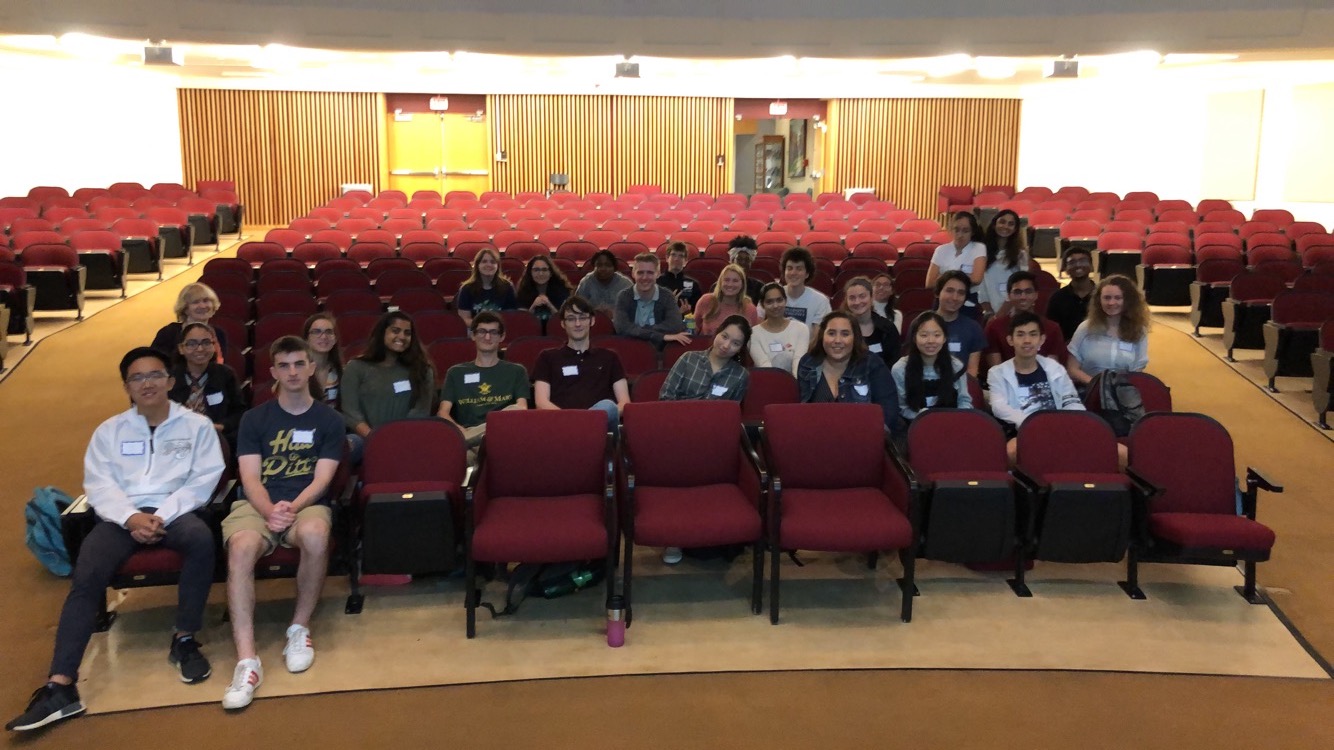Collaborations
CSL Pittsburgh

Citizen Science Lab is a community lab in the Hill District of Pittsburgh, and is the only high school iGEM Team in the area. This lab gives opportunities to a diverse group of students to gain valuable lab experience. Following last year's collaboration, we wanted to continue the opportunity to mentor these students and assist the STEM coordinator in ensuring that their iGEM project ran as smoothly as possible.
Our work with the CSL iGEM team began during the summer when we contacted them to offer assistance and advice with their project. The team was having some difficulties designing their constructs and expression plasmids. Since our team had experience with this step of the project, we created a plasmid map (pVS000044.gb). Additionally, we provided them with some lab materials to get started with transformations. We also prepared LB plates containing DH5a, BL-21, and Rosetta cell lines.
CSL was unsuccessful with the first few transformation attempts however we were able to guide them by demonstrating the transformation of part BBa_K112624 from the iGEM distribution kit. After successfully completing the transformation, we gave them the transformed cells and some linearized pSB1C3 backbone so that they could continue with cloning and transformation in the future.
Mid-Atlantic Meetup

On July 25th, Pittsburgh iGEM team had the opportunity to attend the Mid-Atlantic Meetup hosted by the Virginia iGEM Team. There, we were able to see the incredible work that UMaryland, William and Mary, and Richmond iGEM teams were doing. In addition to hearing about each others projects, we had the opportunity to share and exchange ideas, and gained some new insight into how we could improve our own project. After speaking with the William and Mary team, we decided to continue our collaboration after the meetup in order to try to integrate both of our project ideas together.
William & Mary
After connecting at the Mid-Atlantic Meetup, the William and Mary team were incredibly interested in incorporating their project with our own project. They had implemented a genetic circuit involving light-inducible biofilms. One of the issues that they had encountered was the speed of the circuit. Although they got positive results from their light inducible biofilm, it took them over a day to be able to see any results. Attracted by the speed of inteins, William and Mary reached out to us with the prospect of integrating inteins within their circuit. They proposed incorporating intein-based light sensors at two levels of their circuit: LuxR (a quorum sensing protein) and Ag43 (a biofilm promoting protein). Initially we tried incorporating inteins into Ag43. However, the lack of experimental structure data and appropriate split sites rendered it much more difficult to incorporate. Instead, we looked into incorporating a light inducible intein into the LuxR protein. Therefore, they could induce their genetic circuit simply through light excitation.
We found 10 split sites within LuxR. When taking into consideration what parts of the protein would be appropriate for the insertion of an intein sequence, we mainly considered junction dependency and minimal disruption of secondary structure in order to retain functionality of the protein. We wanted to keep things as simple and reliable as possible by choosing a remarkably flexible intein with regard to flanking sequence dependency: DnaE npu. Our best predicted split site was between amino acids N155-156.
Although the flanking sequence at this junction was not a perfect match, the N-1 site was a known working amino acid with about an 80% yield when tested. Additionally, the C+2 position was a known working amino acid with a yield of about 75%. We theorized that these two factors would not severely inhibit splicing. The main concern with this split site was maintaining the secondary structure and therefore preserving functionality of the LuxR protein after splicing. Unfortunately, due to the large number of alpha helices in the structure, all the potential split sites were inside alpha helices so there was little choice.
Given more time to experiment, it may be possible to modify the LuxR protein so as to introduce a more ideal splicing site that sits outside of an alpha helix. These types of mutations have been performed successfully with inteins but generally they require experimental screening and are difficult to predict in-silico.
